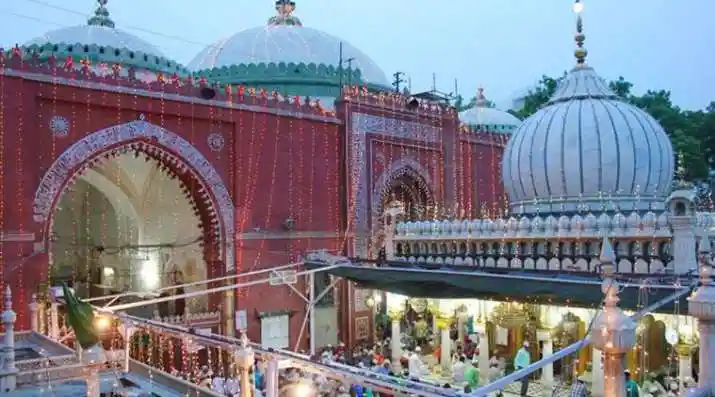The Path to Mysticism
Traveling down the memory lanes of Medieval India has always been fun. With the increasing imperialism of Islamic rulers, the Indian subcontinent experienced the earliest forms of religious tolerance. The rise of Sufism is one such movement that brought in a lot of significant changes.

Nizamuddin Auliya and Amir Khusrau engaging in a discussion; Image Source: Satyagraha
The reason behind the rise of Sufism lies in the overwhelming growth of materialism and the dogmatic definitions of interpreting the Quran. As an answer, a group of people known as Sufis turned to mysticism. They emphasised on seeking salvation through intense devotion and forming a direct link with God.
By the 12th century, the Sufis had united for their cause and were ready to preach the concept of mysticism. While there were many Orders (silsila) in Sufism, the most common was the Chisti Order in India. Khwaja Moinuddin Chisti's arrival in 1161 AD marked the beginning of the Chishti Order. He then appointed Khwaja Qutbuddin Bakhtiyar Kaki as his spiritual successor to continue the silsila for the upcoming generations.
Hazrat Nizamuddin Auliya was the fourth Shaikh or spiritual successor of the Chisti Order in India. Under his tutelage, the Chisti Order not only gained popularity but also invited celebrated disciples.
Born in Badayun, Uttar Pradesh, Auliya lost his father at 5, which prompted the family's move to Delhi. On his visit to Ajodhan at 20, he met the Sufi saint Fariduddin Ganjshakar. A young Nizamuddin was immediately shot with the arrow of devotion and became a disciple of Baba Farid. The annual visits to Baba Farid had become a ritual. On one of his casual visits, Baba Farid declared Nizamuddin as his successor. A shocked Nizamuddin couldn't register the turn of events and returned home. Soon after his arrival, he received the news of Baba Farid's death. He then accepted his role and set out to fulfil the wish of his predecessor.
After travelling extensively through the length of North India, Nizamuddin Auliya finally settled in Ghiyaspur, where he built his khanqah or hospice.
The khanqah was a multi-purpose complex where Nizamuddin Auliya lived and preached to his devotees. An open kitchen or langar was also run to feed the needy and the poor. The power of Nizamuddin's teachings was such that people from all walks of life came to visit him and listen to his words of wisdom.
Nizamuddin's speciality was that he never let class and caste distinctions be a barrier in the path of devotion. He embraced and accepted disciples with open arms. Amongst the most famous disciples of Nizamuddin Auliya is the celebrated court poet Amir Khusrau.
An integral part of devotion in the Chisti Order consisted of Sama, which means reciting mystical chants accompanied by singing and dancing. You all must be familiar with the concept of qawwali which has permeated popular culture today. All thanks to Amir Khusrau, the father of qawwali, who introduced ghazal as a singing style.
The duo of mentor and disciple had the ultimate bond of asceticism and love. Soon after the death of Nizamuddin Auliya on 3 April 1325, Amir Khusrau joined him shortly. Khusrau's burial is near Nizamuddin's Dargah (tomb shrine) in Delhi. The devotees visit the dargah in large numbers on the death anniversary or Urs of Nizamuddin Auliya.
Nizamuddin Auliya's 70 year-long spiritual career saw an amiable relation with the rulers of the Delhi Sultanate, who survived on the symbiotic relationship with the Shaikh. With the latter's blessings, the rulers could balance the polytheistic background of the Indian subcontinent.
Before Nizamuddin's death, he had ordered many of his disciples or Khalifas to disseminate his teachings to keep the Chisti Order going. Today, many branches of the Nizami Chisti Order have emerged throughout the globe as a result of his last wish.

Hazrat Nizamuddin's Dargah in Delhi; Image Source: India Tv


